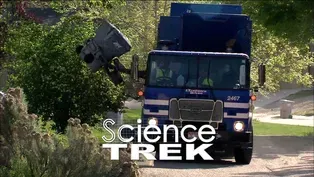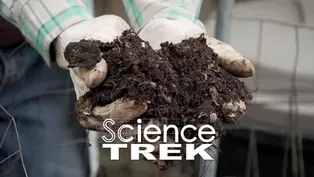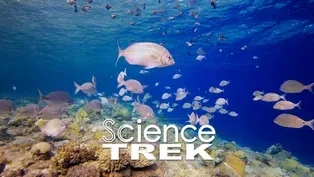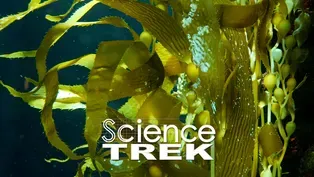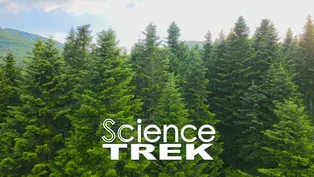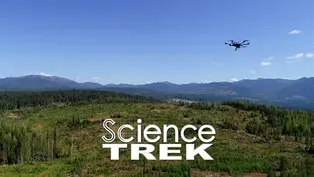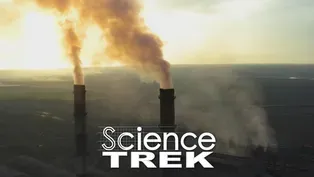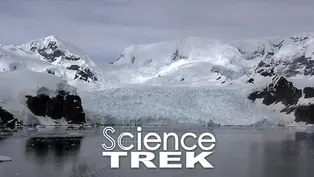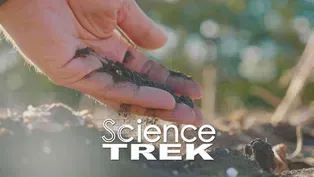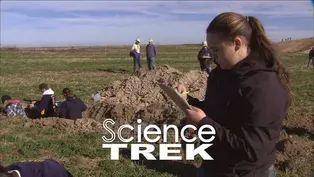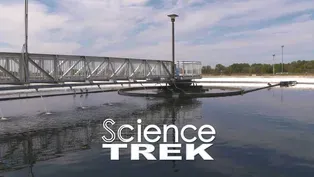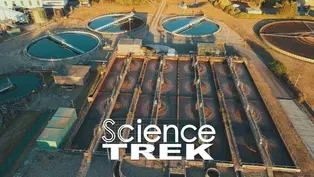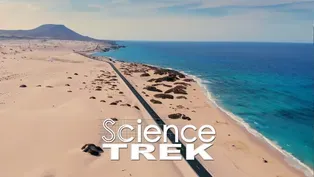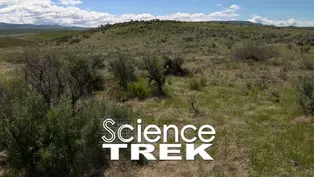
Deserts: Not Just Sand
Special | 6m 29sVideo has Closed Captions
What are the four basic kinds of deserts?
A desert is one of the Earth’s biomes with a specific climate and its own types of plants and animals. About one fifth of the Earth’s land surface is classified as desert and they are found on every continent. Find out more about deserts.
Problems with Closed Captions? Closed Captioning Feedback
Problems with Closed Captions? Closed Captioning Feedback
Science Trek is a local public television program presented by IdahoPTV
Major Funding by the Laura Moore Cunningham Foundation and the Idaho National Laboratory. Additional Funding by the Friends of Idaho Public Television and the Corporation for Public Broadcasting.

Deserts: Not Just Sand
Special | 6m 29sVideo has Closed Captions
A desert is one of the Earth’s biomes with a specific climate and its own types of plants and animals. About one fifth of the Earth’s land surface is classified as desert and they are found on every continent. Find out more about deserts.
Problems with Closed Captions? Closed Captioning Feedback
How to Watch Science Trek
Science Trek is available to stream on pbs.org and the free PBS App, available on iPhone, Apple TV, Android TV, Android smartphones, Amazon Fire TV, Amazon Fire Tablet, Roku, Samsung Smart TV, and Vizio.

Science Trek
Science Trek is a place where parents, kids, and educators can watch short, educational videos on a variety of science topics. Every Monday Science Trek releases a new video that introduces children to math, science, technology, engineering, and math (STEM) career potentials in a fun, informative way.More from This Collection
Oceans: What's Under the Surface?
Video has Closed Captions
Oceans cover 70% of the Earth’s surface. Find out more about what’s under the surface. (7m 4s)
Oceans: Saving Kelp with AI and ROV
Video has Closed Captions
How do you use AI, ROV and an x-box joystick to save kelp? (6m 50s)
Video has Closed Captions
Forests provide us oxygen to breathe and much more. Find out about Forests. (5m 5s)
Forests: Flying Drones for the Trees
Video has Closed Captions
Learn about the latest technology used to manage forest land. (6m 49s)
Climate: Climate Change and Greenhouse Gases
Video has Closed Captions
Meet a climate scientist and join her on a mission. (6m 11s)
Video has Closed Captions
Learn more about the different climates found on Earth. (6m 38s)
Video has Closed Captions
You don’t have to be in college to learn how to be a soil scientist. (5m 4s)
Sewage: Sewage Through the Ages
Video has Closed Captions
What shouldn’t you put down the drain or flush away? (6m)
Providing Support for PBS.org
Learn Moreabout PBS online sponsorshipJOAN CARTAN-HANSEN, HOST: A biome is a large area with a specific climate, and its own kind of plant, and animal life.
The desert biome makes up a large part of the earth's surface.
Deserts can be hot or cold.. Have lots of vegetation or not much at all.
Let's follow a couple of students as they search for answers to the question.
What is a desert?
[MUSIC] STUDENT ONE: We are supposed to be looking for a desert.
What are we doing here?
There's no sand.
STUDENT TWO: We're meeting a biologist up ahead.
He'll help us find the desert.
There he is!
DR. CAUGHLIN: Oh, hi.
Thanks for meeting me here!
STUDENT ONE: Thanks Dr. Caughlin.
We are supposed to be looking for a desert, but I don't understand why we are here.
This doesn't look like a desert.
What exactly is a desert?
DR. CAUGHLIN: So, a desert is an ecosystem on the earth's surface that receives less than 10 inches of rain a year.
CARTAN-HANSEN: Hey, can I jump in here?
STUDENTS TOGETHER: Sure!
CARTAN-HANSEN: About one-fifth of the Earth's land surface is classified as desert.
And deserts are found on every continent.
There are four basic kinds of deserts: hot and dry, cold, coastal, and semi-arid.
Hot and dry deserts have flat and rocky areas as well as rolling sand dunes.
STUDENT ONE: That's where the sand is!
CARTAN-HANSEN: Right.
But only about 20 percent of hot and dry deserts are covered by sand.
Cold deserts exist in high-altitude regions and near the poles and get most of their moisture from snow.
Coastal deserts happen along western oceans.
And semi-arid deserts can be found in mountainous areas as well as rocky slopes and bottomlands.
STUDENT TWO: Desert types are all so different.
Do they have anything in common?
CARTAN-HANSEN: W ell, sort of.
All deserts get very little rainfall or get most of their moisture from snow.
So, the plants and animals in those deserts have to figure out how to survive in extreme heat or extreme cold and with very little water.
STUDENT ONE: Dr. Caughlin, how do plants adapt?
DR. CAUGHLIN: For many plants, the way they survive the summer heat is by having really deep root systems.
So our sagebrush plants here can have roots that are 10 feet deep under the ground.
And so the depth of those roots enables the sagebrush plants to tap into underground water even during really hot parts of the year.
CARTAN-HANSEN: Desert animals adapt too.
Some are nocturnal, that is they are awake at night and sleep during the day.
Others find ways to avoid being out in the hottest part of the day.
DR. CAUGHLIN: They rest in their underground burrows when it's really hot outside and they store enough food that they can take a break during the hottest part of the year.
And other animals that are really sensitive to cold, like cold-blooded animals, including lizards and snakes, they're going to hibernate during that cold part of the year.
And so, all of our native plants and animals have these adaptations that let them survive during the hot and cold parts of the year here.
STUDENT TWO: What's so special about the desert where we live in Idaho?
DR. CAUGHLIN: So in Idaho, we are part of the Sagebrush Steppe ecosystem.
Our desert is dominated by a species of plant called Sagebrush.
Sagebrush Steppe is a gigantic ecosystem that spans about 8% of the continental United States from Arizona and New Mexico to the border with Canada and British Columbia.
And these foundational species of shrub provide food and habitat for over 350 species of native plants and animals.
CARTAN-HANSEN: Deserts around the world face some big problems.
Climate change is leading to higher temperatures, altered rainfall patterns, and more frequent and intense weather events.
Another issue is invasive species like cheatgrass pushing out native plants.
DR CAUGHLIN: The most important way that invasive annual grasses change our native ecosystems is that they change how much fire comes through the area.
When these invasive grasses come through, they change that fire return interval from about once every 80 years to as a fire, as often as once every four years.
And so that leaves a lot less time for the plant communities to recover from the fire.
CARTAN-HANSEN: But there's a lot we all can do to protect desert habitat and appreciate this important type of ecosystem.
DR. CAUGHLIN: And so what I would like kids to know about the desert is that we live in this beautiful, amazing place where there are so many species of plants and animals that have adaptations to the cold and the heat that our deserts experience.
And altogether, those plants and animals form a community that provides ecosystem services to people.
And those ecosystem services include helping maintain clean water supply for us, providing recreational opportunities for hikers and hunters and other forms of outdoor activities and providing food and habitat for animals.
STUDENT ONE: Wow!
Deserts are really important.
STUDENT TWO: I agree.
Thank you Dr. Caughlin for answering our questions.
STUDENTS TOGETHER: Bye!
DR. CAUGHLIN: Good-bye!
Thank you for coming.
I hope you learned about deserts and have a safe hike back.
CARTAN-HANSEN: If you want to learn more about deserts, check out the Science Trek website.
You'll find it at science trek dot org.
[MUSIC] ANNOUNCER: Presentation of Science Trek on Idaho Public Television is made possible through the generous support of the Laura Moore Cunningham Foundation, committed to fulfilling the Moore and Bettis family legacy of building the great state of Idaho.
By the Idaho National Laboratory, mentoring talent and finding solutions for energy and security challenges, by the Friends of Idaho Public Television and the Corporation for Public Broadcasting.
Video has Closed Captions
Clip: Special | 1m 4s | What kind of animals live in coastal deserts? (1m 4s)
Video has Closed Captions
Clip: Special | 1m 4s | Where is the Great Basin semiarid desert? (1m 4s)
Providing Support for PBS.org
Learn Moreabout PBS online sponsorshipSupport for PBS provided by:
Science Trek is a local public television program presented by IdahoPTV
Major Funding by the Laura Moore Cunningham Foundation and the Idaho National Laboratory. Additional Funding by the Friends of Idaho Public Television and the Corporation for Public Broadcasting.
